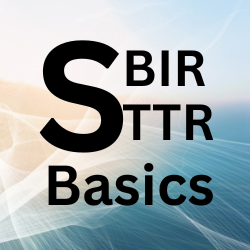Welcome to Small Business Innovation Research (SBIR) and Small Business Technology Transfer (STTR) programs, where your big ideas meet federal funding. But before you start spending those funds, you must know the rules. Federal Acquisition Regulation (FAR) Part 31 is the rulebook for you. For SBIR/STTR newbies, FAR 31 is your guide to what costs you can charge to your contract and how to avoid audit nightmares. Think of it as the guardrail that keeps your small business on the right side of compliance. Let’s break it down into plain English, debunk some myths, and give you the tools to get started without losing your sanity.
What Is FAR 31, and Why Should You Care?
FAR Part 31, “Contract Cost Principles and Procedures,” is the federal rulebook for determining which costs are allowable, reasonable, and allocable on government contracts. For SBIR/STTR recipients, it’s critical because most of your awards, especially Phase II, are cost-reimbursement contracts, meaning you get paid for actual costs incurred, but only if they pass FAR 31’s tests. Mess this up, and you could face disallowed costs, delayed payments, or a government (Defense Contract Audit Agency (DCAA)) audit that feels like a root canal.
Why does this matter? As a small business, your cash flow is tight, and every dollar counts. Understanding FAR 31 ensures you get reimbursed for legitimate costs, avoid penalties, and build trust with contracting officers. Plus, it’s your first step to scaling from a Phase I proof-of-concept to a Phase II prototype or beyond.
The Three Pillars of FAR 31
FAR 31.201 lists three key tests your costs must pass to be reimbursable. Let’s unpack them:
- Allowability (FAR 31.201-2)
A cost is allowable if FAR permits it, as well as your contract, and generally accepted accounting principles (GAAP). Some costs, like salaries for engineers working on your SBIR project, are typically fine. Others, like happy hour drinks or lobbying expenses, are explicitly unallowable (see FAR 31.205).
Example: Paying for lab equipment to build a prototype is allowable. Buying a company yacht? Not so much. - Reasonableness (FAR 31.201-3)
A cost is reasonable if it’s what a prudent business would pay in similar circumstances. Spending $5,000 on a laptop when a $1,000 model does the job will raise red flags. Auditors compare your costs to market norms, so documentation is your best friend.
Example: Hiring a consultant at $150/hour is reasonable if that’s the industry rate. Paying $500/hour without justification? Trouble. - Allocability (FAR 31.201-4)
A cost is allocable if it benefits your contract. Direct costs, like materials for your STTR prototype, are easy. Indirect costs, like office rent, must be split fairly across all projects. For SBIR/STTR, accurate timekeeping is crucial to allocate labor costs correctly.
Example: An employee working 80% on your SBIR project and 20% on commercial work should have their salary allocated accordingly.
Common Myths and Traps
Let’s clear up some misconceptions that trip up newbies:
- Myth 1: “All my costs are allowable.” Nope. FAR 31.205 lists unallowable costs like advertising, alcohol, or fines. Check this list before invoicing.
- Myth 2: “I don’t need records.” Wrong. Cost disallowance occurs without receipts, timesheets, or vendor quotes.
- Myth 3: “SBIR/STTR contracts are lenient.” Not true. Cost-reimbursement contracts face intense scrutiny, especially during DCAA audits.
A common trap is sloppy timekeeping. If your team doesn’t log hours daily or tie them to specific projects, auditors may reject labor costs, often your most significant expense. Another common issue involves claims for unallowable costs, like entertainment, because “it’s just a small amount.” Small or not, it’s a red flag.
Getting Started: Your FAR 31 Toolkit
You don’t need an accounting degree, but a plan to comply with FAR 31. Here’s a newbie-friendly toolkit to keep you on track:
- Cost Compliance Checklist:
- Is the cost allowable per FAR 31.205 and contract terms?
- Is it reasonable compared to market rates?
- Is it allocable to the SBIR/STTR contract?
- Do I have receipts, timesheets, or quotes to prove it?
- Timekeeping Rule: Use a DCAA-compliant tool like Harvest or QuickBooks Time. Require daily hour logging, with supervisor approval weekly. For example, an engineer should log 6 hours to “SBIR Phase I, Task 1” and 2 hours to “Commercial R&D.”
- Accounting Setup: Configure software like QuickBooks for job cost accounting. Create separate accounts for direct costs (e.g., SBIR materials) and indirect costs (e.g., utilities). Flag unallowable costs automatically.
- Training: Hold a 30-minute team session on FAR 31 basics. Cover allowable vs. unallowable costs and timekeeping rules. A quick quiz can reinforce learning.
- DCAA Resources: Visit www.dcaa.mil for free guides, like the “Information for Contractors” manual, which explains FAR 31 and audit expectations.
Real-World Wake-Up Call
A first-time SBIR recipient claimed $10,000 for “miscellaneous expenses” without receipts. The DCAA disallowed it all, citing FAR 31.201-2’s documentation requirement, leaving the company scrambling. Meanwhile, another newbie used QuickBooks to track costs, kept daily timesheets, and sailed through an audit with full reimbursement. The difference? Preparation and FAR 31 knowledge.
Your First Step to Success
FAR 31 may seem like a maze, but it’s your roadmap to getting paid and staying compliant. For SBIR/STTR newbies, mastering allowability, reasonableness, and allocability is the foundation for turning your innovation into impact. Start small: set up timekeeping, review FAR 31.205, and document every cost. With these basics, you’re not just surviving—you’re building a business that thrives in the federal arena.
So, grab your contract, fire up your accounting software, and dive into FAR 31. It’s not sexy, but it’s the key to keeping your SBIR/STTR dreams alive.


